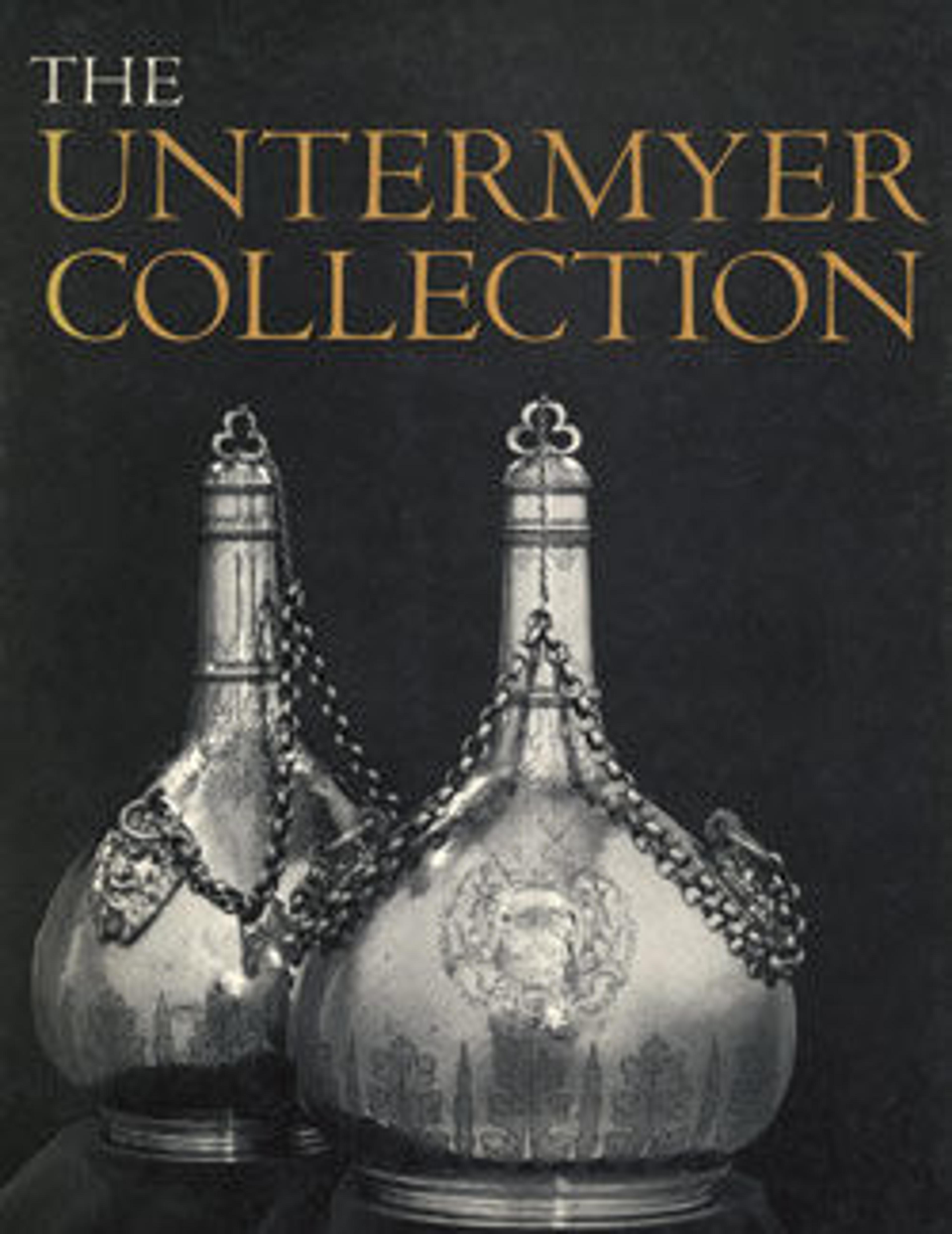Bell-shaped salt
This bell salt was so named from the overall bell-like profile of the object as well as of each of the two superimposed sections. Salt was not an easy material to acquire in Europe. In England, it was obtained by the evaporation of seawater. Salt pans were located in towns beside the sea, where they could be flooded and carefully tended while the seawater evaporated. In parts of Europe, rock salt was extracted from mountainsides, where its presence was evidence that the area was once under sea.
This bell salt is comprised of two containers and a pepper shaker. The unidentified maker's mark is known from other small household objects such as cups and salts dating to the early seventeenth century. The decoration is in reserve on a ring-punched ground, and consists of leaves of several types set in roundels or lozenges or elsewhere just set into the ring-punched ground. The effect is much like linen damask, with its contrast of shiny and dulled areas.
This bell salt is comprised of two containers and a pepper shaker. The unidentified maker's mark is known from other small household objects such as cups and salts dating to the early seventeenth century. The decoration is in reserve on a ring-punched ground, and consists of leaves of several types set in roundels or lozenges or elsewhere just set into the ring-punched ground. The effect is much like linen damask, with its contrast of shiny and dulled areas.
Artwork Details
- Title: Bell-shaped salt
- Maker: T. S., London (ca. 1600–1601)
- Date: 1600/1601
- Culture: British, London
- Medium: Silver gilt
- Dimensions: Height: 8 in. (20.3 cm)
- Classification: Metalwork-Silver
- Credit Line: Gift of Irwin Untermyer, 1968
- Object Number: 68.141.92a–d
- Curatorial Department: European Sculpture and Decorative Arts
More Artwork
Research Resources
The Met provides unparalleled resources for research and welcomes an international community of students and scholars. The Met's Open Access API is where creators and researchers can connect to the The Met collection. Open Access data and public domain images are available for unrestricted commercial and noncommercial use without permission or fee.
To request images under copyright and other restrictions, please use this Image Request form.
Feedback
We continue to research and examine historical and cultural context for objects in The Met collection. If you have comments or questions about this object record, please complete and submit this form. The Museum looks forward to receiving your comments.
